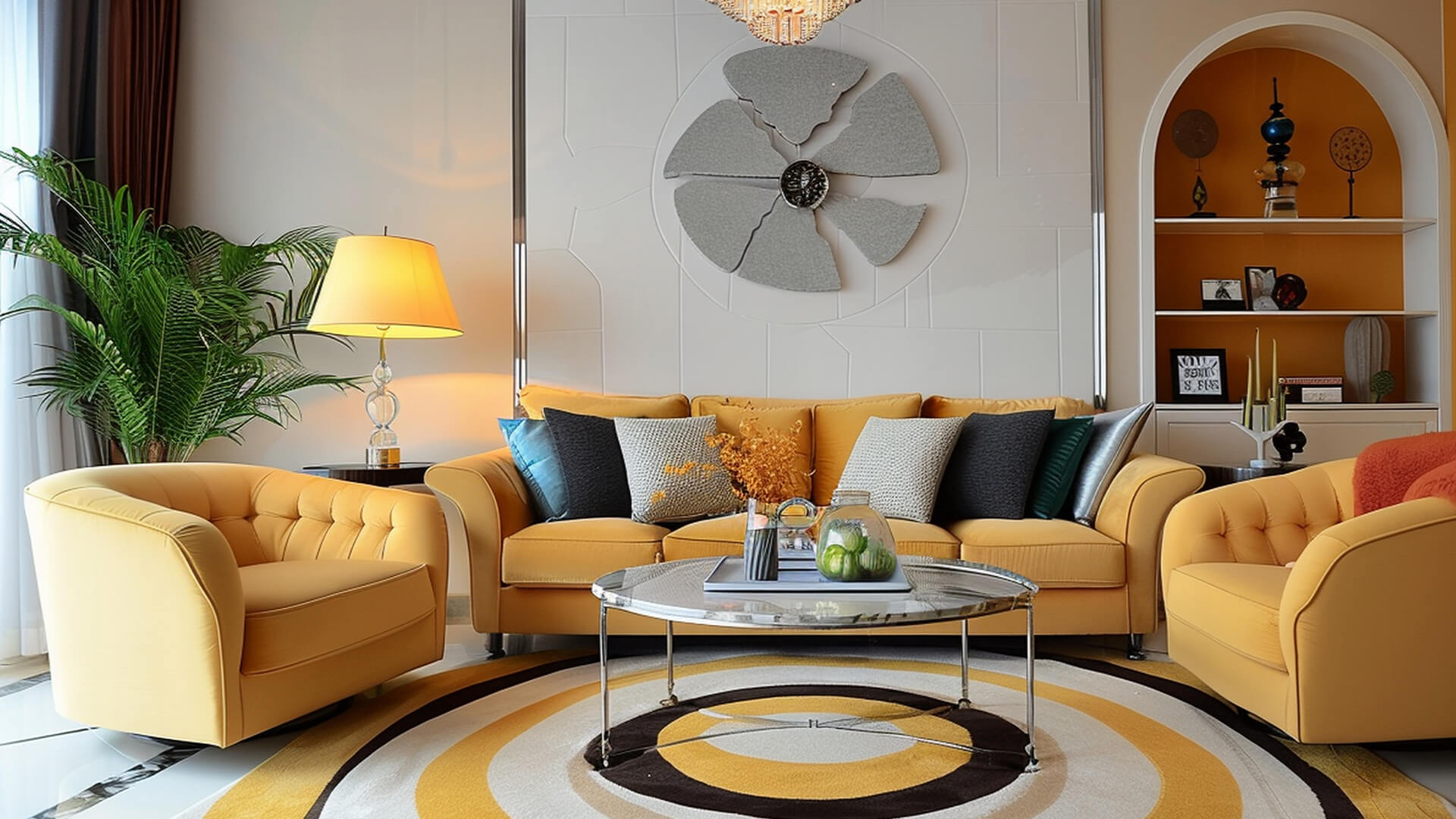
Creating the ideal environment in medical and dental clinics involves more than just decoration. It’s about developing a space that fosters health, comfort, and efficiency. Effective interior design plays a crucial role in influencing patient experiences and staff productivity, making it an essential aspect of healthcare management. This blog post explores how aesthetics and functionality merge to enhance the overall atmosphere of health and efficiency in these critical environments.
This blog post will highlight some vital interior design strategies for dental and medical clinics that place equal emphasis on patient comfort and functionality to create a comprehensive guide for professionals looking to elevate their practice through thoughtfully designed spaces.
Why Interior Design Matters for Medical and Dental Clinics?
The environment in which patients receive care impacts their overall experience and recovery. Thoughtful design can reduce patient anxiety, enhance communication, and optimize operational efficiency—features that ultimately affect their outcomes.
| Reducing Patient Stress | Enhanced Privacy and Comfort | Operational Efficiency | Professional Image |
| Features such as natural lighting, soothing color schemes, and comfortable seating create a relaxed atmosphere, helping to ease patient anxiety. | Proper layout and design ensure patient privacy during consultations and treatments, fostering trust and ease. | Efficiently planned interiors improve workflow, reducing staff movement and increasing time spent on direct patient care. | A well-maintained clinic reflects the care provider’s commitment to quality and modernity, boosting credibility and patient trust. |
The design of the clinic often reflects the healthcare providers’ approach to patient care, making it a crucial part of their professional identity.
Interior Design Themes for Dental Clinics
For dental clinics, design must blend a soothing atmosphere with the precision and cleanliness associated with dental care. Here are effective dental clinic interior designs:
Tranquil colors: Soft blues, greens, and neutral tones evoke calmness and cleanliness, reducing anxiety associated with dental visits.
Nature-inspired elements: Wood accents and indoor plants create a calming ambiance.
Soft lighting: Soft, indirect lighting should be used to avoid glare and shadow, thereby making the space much more relaxing.
Functional design elements: These should be incorporated to make the most effective use of the available space in terms of providing comfort and space to the patients.
Ergonomic furniture: Chairs and treatment tables should be provided with comfortable support for patients in wait during their visit.
Smart storage solutions: Well-organized storage keeps the clinic tidy and clean. This is crucial for aesthetics and functionality.
Private consultation areas: Areas for discussion must be designed to offer patients confidentiality and comfort for better interaction with the staff.
These elements have at least two functions; they enhance the aesthetic quality of the dental clinic and increase its operational efficiency. In short, the creation of such a space would necessarily involve a balanced relationship of form and function to meet the needs of both the patients and the healthcare providers.
Innovative Design Ideas for Medical Offices
Medical offices have to address a wider range of needs, providing various specialties and procedures while ensuring the comfort of patients and the efficiency of the clinic. Here are some innovative ideas for your next medical office interior design:
Integrating Technology
The modern practice of medicine is supported by advanced technology, which is to be reflected in the design of the office.
Digital check-in stations: Efficient and reduced waiting times.
Advanced medical equipment: Well-placed and integrated into treatment rooms without cluttering up the space.
Professional and Comfortable Themes
The right amount of balance between professional and inviting.
Sleek, modern designs: Clean lines and contemporary furniture that speak to professionalism.
Warm accents: Soften the modern feel with wood tones or textured fabrics to invite warmth into the space.
Biophilic Design Elements
The incorporation of elements of nature can greatly help to improve the healing environment.
Living green walls: Improve air quality and patient mood.
Natural light: Make the most of daylight and brighten up the spaces, providing a sense of connection to the outside world.
These design strategies not only cater to aesthetic appeal but also greatly influence the functional aspects of medical offices, enabling better patient experiences and supporting staff in their ability to deliver efficient care.
Design Strategies That Enhance Patient Comfort and Clinic Functionality
A medical or a dental clinic interior design goes beyond just picking attractive décor elements; it requires a strategic approach that combines patient comfort with operational functionality. Effective interior design combines patient comfort with operational functionality, contributing to the success of the healthcare facility.
Strategic Furniture Selection
Choosing the right furniture is at the core of enhancing patient comfort and supporting the healthcare team’s functionality.
Ergonomic seating options: Chairs that can offer the right kind of support and comfort can make the waiting hours less daunting for the patients and without straining during long hours of consultation.
Staff functional workspaces: Efficiently designed workspaces help staff to do their duties effectively, thereby contributing to the general clinic productivity.
Effective Use of Space
Better layout optimization of the clinic can dramatically enhance both patient flow and staff workflow.
Open layout: Facilitates easier movement and interaction while still maintaining privacy through smart partitioning.
Private areas for sensitive conversations: Ensures that discussions about diagnoses or treatments are handled with the confidentiality they require.
Lighting Solutions
Lighting is essential in terms of aesthetics, but even more so for functionality.
Task lighting in treatment areas: This allows the medical personnel to conduct procedures with accuracy.
Ambient lighting in waiting areas: This helps create a warm, inviting atmosphere that can diffuse the anxiety patients may have.
The Benefits of Proper Interior Designing in Healthcare Settings
A dental clinic and a medical office interior design offers plenty of benefit, from patient psychology and staff efficiency to the reputation of the clinic.
Higher Patient Satisfaction Guarantee
A well-designed clinic often sees higher patient satisfaction, which can lead to increased retention and referrals.
Comfortable environment reduces anxiety: Patients often feel anxious in clinical settings; a thoughtfully designed space can mitigate these feelings and improve the overall patient experience.
Aesthetic pleasure enhances mood: Beautiful and functional spaces can uplift patients’ spirits during their visits.
Boosted Staff Morale and Productivity
Employees working in well-designed healthcare environments experience higher job satisfaction, which can enhance productivity and reduce turnover.
Good designs minimize fatigue: Well-designed layouts reduce unnecessary movement and allow for more efficient patient care.
Attractive work environments relieve stress: The attractive and functional workspace reduces the stress level among staff.
Professional Image Improvement
The first impression counts, and a modern, well-maintained clinic gives the impression that one is dealing with professionals and competent in the field of medical practice.
Quality of care perception: The interior design of a clinic reflects on the perceived quality of care; such that well-thought interior elements reflect a commitment to excellence.
Attracts more clients: An attractive, welcoming space can draw more patients, benefiting clinic growth and financial success.
Long-term cost savings
The investment in quality design elements pays off by saving money in the long run.
Durable materials reduce the frequency of replacements: Choosing the right materials can reduce renovation time and maintenance.
Energy-efficient designs lower utility costs: Incorporating energy efficiency into lighting and climate control systems saves significantly on utility bills.
These benefits highlight the importance of integrating thoughtful design strategies into the planning and refurbishing of medical and dental clinics.
Conclusion
Wrapping up the discussion of the role that interior design plays in medical and dental clinics is the fact that considered design goes beyond appearances. It contributes enormously to the improvement of the patient experience, staff productivity, and reputation of the healthcare industry by a clinic. By incorporating all these principles of design, healthcare facilities can achieve a harmonious balance between beauty and functionality, which is essential for fostering an environment of healing and professional excellence.

